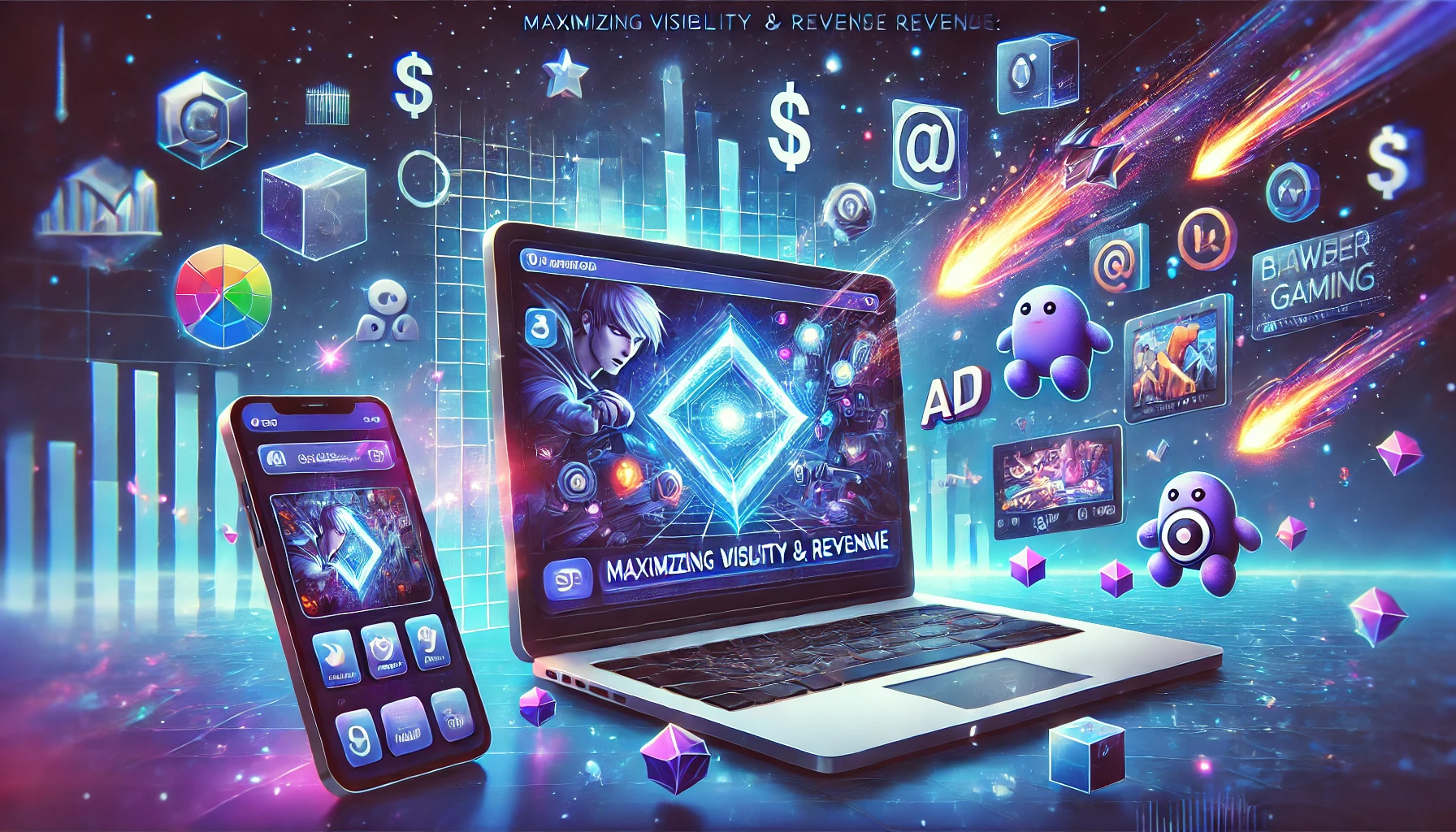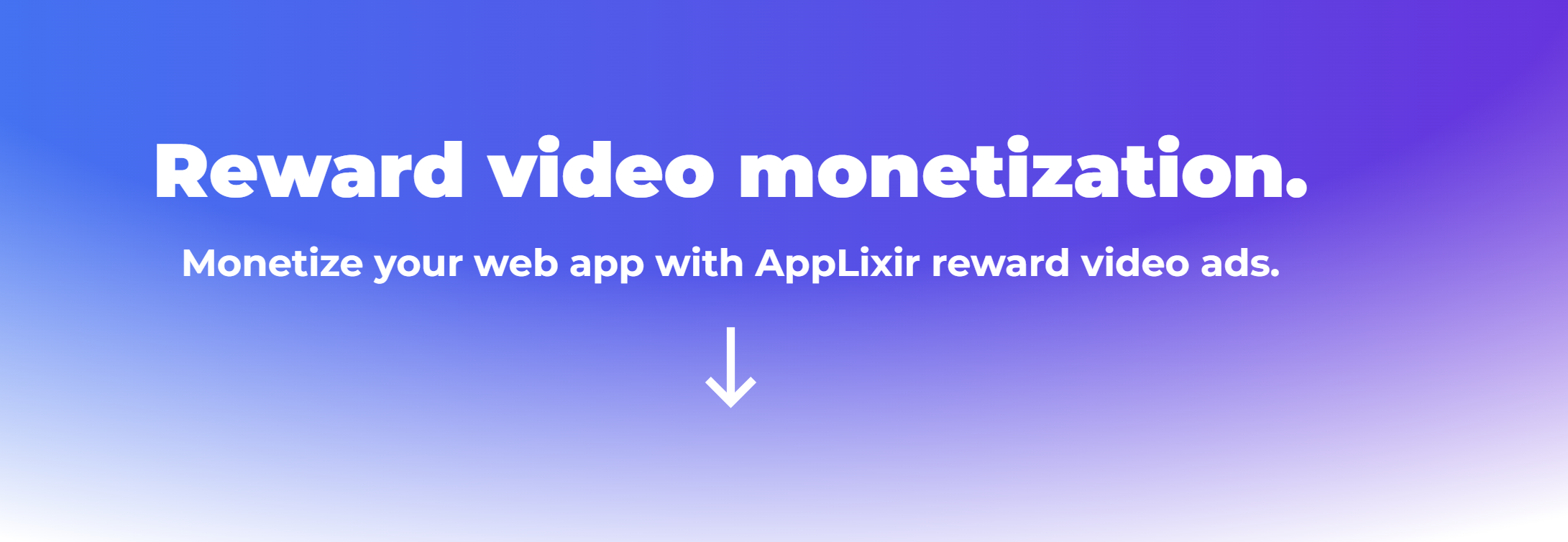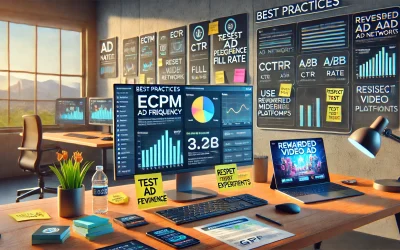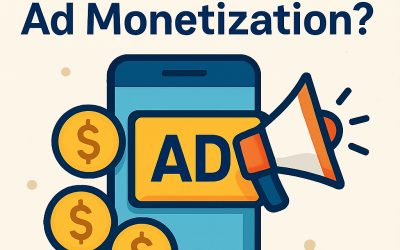Maximizing Visibility & Revenue: A Guide for Browser-Based Games
Browser-based gaming is experiencing a remarkable resurgence, with 16% of game developers now focusing on web-based releases—the highest percentage recorded in nearly a decade. This upward trend is driven by several key advantages that browser games offer over traditional mobile or console gaming. One of the most significant advantages is instant playability—players can start a game instantly without downloading large files or waiting for updates. This frictionless experience reduces entry barriers, making games more accessible, particularly in regions with low-end devices or limited storage capacity. On this post – Maximizing Visibility & Revenue: A Guide for Browser-Based Games, I try to cover the following!
[ez-toc]
Another driving factor behind this growth is the independence from app store restrictions. Developers publishing games on the Apple App Store or Google Play Store must comply with stringent regulations and revenue-sharing policies. These restrictions often limit creativity and take a 30% revenue cut from in-game purchases. Browser games, on the other hand, offer developers the freedom to control their monetization strategies and revenue streams without interference from third-party platforms.
Technological advancements have also played a crucial role in the revival of browser gaming. With the introduction of WebGPU integration in Unity 6, developers can now create high-performance, graphically rich browser games that run smoothly across different devices. This improvement significantly reduces the performance gap between native applications and web-based games, making the browser a viable gaming platform once again.
However, despite the momentum, two major challenges remain: discoverability and monetization. Browser-based games lack a centralized marketplace like app stores, making it difficult for developers to attract players. Additionally, monetization models that work well on mobile apps (such as in-app purchases and ad revenue sharing) are not automatically available for browser-based games. Developers must explore alternative strategies to generate revenue, retain players, and grow their gaming communities. This guide explores these challenges and provides proven strategies to maximize visibility, engagement, and monetization in the browser gaming space.
Contents
Why Are More Developers Turning to Browser Games?
Following up on my Maximizing Visibility & Revenue: A Guide for Browser-Based Games post, the growth of browser-based gaming is fueled by multiple factors, making it an attractive option for both indie developers and established studios. First and foremost, browser games bypass the limitations imposed by mobile app stores. In recent years, developers have struggled with Apple’s privacy updates and Google’s changing policies, which have made mobile game monetization increasingly difficult. Browser games offer an alternative route, allowing developers to fully own their games, monetization strategies, and distribution channels.
Another reason for the increasing shift to browser-based games is global accessibility. Unlike console or high-end PC games, browser games can be played on virtually any device, including old computers, budget smartphones, and tablets. This accessibility is particularly beneficial in developing markets, where millions of potential gamers have internet access but limited hardware capabilities.
Additionally, advancements in web gaming technology have made browser-based games more powerful than ever. With WebGPU now integrated into Unity 6, developers can create browser games with advanced physics engines, high-resolution textures, and immersive gameplay mechanics. This technological leap ensures that browser games can now compete with native mobile games in terms of quality and performance.
The Key Challenges Developers Face
While browser-based games come with significant advantages, they also present several challenges. The biggest hurdle is discoverability. Unlike mobile games, which benefit from app store recommendations and search rankings, browser games must rely on external traffic sources such as Google Search, social media, and gaming communities. Without a built-in discovery system, developers must actively market their games to attract players.
Monetization is another major challenge. Many developers are used to app store monetization models, such as in-app purchases and ad placements that are pre-integrated into mobile platforms. However, browser games require developers to find external monetization solutions, such as rewarded video ads, banner ads, direct payments, and subscriptions.
Following up on my Maximizing Visibility & Revenue: A Guide for Browser-Based Games post, another issue is shifting player habits. Many gamers associate high-quality experiences with mobile apps, meaning they may not immediately consider browser-based gaming as a primary platform. Educating players about the advantages of browser games and creating seamless cross-platform experiences are key to overcoming this perception.
Finally, the lack of built-in monetization tools for browser games means developers must manually integrate payment systems, ad networks, and analytics tools to optimize their revenue strategies. This requires technical expertise and experimentation, which can be daunting for smaller studios or indie developers.
Overcoming Discoverability Challenges
 One of the biggest obstacles browser game developers face is getting players to find their games. Unlike mobile games, which can gain visibility through app store search rankings, featured lists, and algorithm-based recommendations, browser-based games lack a centralized discovery hub. This means developers must actively drive traffic to their games using search engine optimization (SEO), social media marketing, influencer collaborations, and gaming platform listings.
One of the biggest obstacles browser game developers face is getting players to find their games. Unlike mobile games, which can gain visibility through app store search rankings, featured lists, and algorithm-based recommendations, browser-based games lack a centralized discovery hub. This means developers must actively drive traffic to their games using search engine optimization (SEO), social media marketing, influencer collaborations, and gaming platform listings.
For a browser game to succeed, it must be easily discoverable through organic search, visible on social media, and actively promoted within gaming communities. By implementing a multi-channel marketing strategy, developers can ensure their game reaches a wide audience of potential players.
Optimizing for Search Engines (SEO)
Since browser games don’t have an app store discovery system, search engines like Google, Bing, and DuckDuckGo become the primary way players find new games. Search Engine Optimization (SEO) is one of the most cost-effective and sustainable ways to attract long-term organic traffic to a game’s website or landing page.
To improve search rankings, developers must optimize game titles, descriptions, and metadata with relevant gaming keywords. For example, if a developer is launching a browser-based RPG, they should include keywords such as:
- “Play free online RPG”
- “Best browser RPG game”
- “No-download role-playing game”
- “Fantasy RPG in browser”
Including these keywords in game descriptions, page titles, and meta descriptions helps Google understand the relevance of the game, making it more likely to appear in search results when players look for similar games.
Beyond keyword optimization, page speed and mobile responsiveness also play a major role in search rankings. Google prioritizes fast-loading, mobile-friendly websites, meaning developers must ensure their game pages load quickly, work seamlessly across devices, and are optimized for mobile play. Using lazy loading for images, compressing game assets, and reducing unnecessary scripts can significantly improve performance and search rankings.
Leveraging Social Media & Gaming Communities
Following up on my Maximizing Visibility & Revenue: A Guide for Browser-Based Games post, social media platforms have become powerful discovery tools for indie games, with many developers growing their player base through Twitter, TikTok, and Reddit. A well-planned social media strategy can drive significant traffic to a browser-based game.
TikTok, in particular, has emerged as a major force in game discovery. Short, engaging gameplay clips can go viral, exposing a game to millions of potential players. Developers should create fast-paced, eye-catching clips of their game, showcasing exciting mechanics, unique features, or funny moments to capture player interest.
Twitter and Instagram also play a role in game marketing, allowing developers to engage with the gaming community, share development updates, and promote new content. Using hashtags like #browsergames, #indiegaming, and #webgames increases visibility among targeted audiences.
Gaming communities like Reddit and Discord provide direct engagement opportunities. Developers can join relevant subreddits (such as r/IndieDev and r/WebGames) to share their games, participate in discussions, and gather player feedback. Meanwhile, setting up a Discord server for a game allows players to build a community, provide feedback, and stay updated on game improvements and events.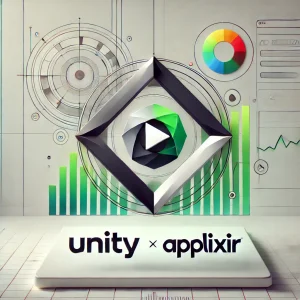
Collaborating with Influencers & Streamers
Gaming influencers on YouTube and Twitch are some of the most influential drivers of game discovery. A single YouTube review or Twitch stream can bring thousands of new players to a game overnight.
Developers should reach out to Twitch streamers and YouTubers who specialize in indie or web-based games, offering exclusive content, free game access, or revenue-sharing opportunities in exchange for promotion. Some creators also prefer early access builds so they can showcase new and upcoming games before their official launch.
A great strategy is to identify micro-influencers (those with 10K-100K followers) who have highly engaged audiences rather than going for massive influencers who may have less active engagement per post.
Listing on Popular Browser Game Platforms
Another highly effective way to increase discoverability is to publish the game on established browser gaming platforms. Websites like Newgrounds, Kongregate, Poki, and CrazyGames already have millions of players actively searching for new web-based games. Listing a game on these platforms provides:
- Instant visibility to a large gaming audience
- Built-in monetization tools (some platforms share ad revenue with developers)
- Potential feature placements on the homepage
Since many of these platforms allow game uploads for free, developers can take advantage of their traffic and promotion tools to gain new players without heavy marketing spend.
Monetization Strategies for Browser-Based Games
Following up on my Maximizing Visibility & Revenue: A Guide for Browser-Based Games post, one of the biggest challenges for browser-based games is monetization. Unlike mobile games, which have built-in app store payment systems, browser games require developers to integrate third-party solutions for ad revenue and in-game purchases. Without the right monetization tools, developers struggle to generate revenue effectively.
Monetization is one of the biggest challenges for browser games, as developers can’t rely on app store-based in-app purchases or built-in ad systems. Instead, they must use a mix of advertising, microtransactions, and premium content offerings to generate revenue.
Rewarded Video Ads: The Best Performing Ad Model
One of the most effective monetization strategies for browser-based games is rewarded video ads, where players watch ads in exchange for in-game rewards like currency, power-ups, or extra lives. This model works well because:
- Players voluntarily watch ads in exchange for rewards, reducing ad fatigue.
- It improves retention by keeping users engaged with in-game incentives.
- It generates higher eCPM (earnings per thousand impressions) than banner ads, leading to more revenue.
Platforms like AppLixir specialize in rewarded video ads for browser games, offering seamless integration and high engagement rates. Compared to standard banner ads, rewarded video ads drive significantly higher revenue while maintaining a good user experience.
In-Game Advertising: Balancing Monetization & Player Experience
Developers can also implement banner ads, interstitial ads, and native ads to generate passive income. However, placement matters—ads should never disrupt gameplay or cause frustration. A/B testing different ad placements allows developers to find the sweet spot between revenue and user experience.
For best results, developers should:
- Use non-intrusive banner ads at the bottom of the screen rather than full-screen pop-ups.
- Limit interstitial ads to natural breaks (like between game levels).
- Integrate native ads into the environment (e.g., billboards in racing games).
Using Google AdSense, Playwire, or AdinPlay can help developers maximize ad revenue while preserving player satisfaction.
Microtransactions & Virtual Goods
Another profitable monetization strategy is selling in-game items, cosmetics, and currency. Many players are willing to spend money on:
- Custom skins & character outfits
- Exclusive power-ups or weapons
- Special in-game currency
This strategy works especially well for multiplayer or competitive games, where players want to stand out visually or gain slight advantages.
Developers can implement direct payment systems like PayPal, Stripe, or Xsolla to process in-game purchases securely without needing an app store.
Changing Player Habits: Encouraging Browser-Based Play
Following up on my Maximizing Visibility & Revenue: A Guide for Browser-Based Games post, one of the biggest challenges for browser games is convincing players to switch from app stores to browsers. For years, mobile users have been conditioned to download apps rather than playing games directly in a browser. The App Store and Google Play Store dominate the mobile gaming market, making it difficult for web-based games to gain traction.
Players are often unaware of the benefits of browser-based gaming, and many assume that web games are outdated or lower in quality. However, with modern web technologies like WebGPU, HTML5, and WebAssembly, browser games can now match or even exceed the quality of some mobile apps. The challenge lies in educating players and shifting their habits. Developers must actively promote the advantages of browser gaming, integrate cross-platform compatibility, and implement retargeting strategies to drive engagement.
Educating Players on Browser Gaming Benefits
Many players don’t realize how seamless and efficient browser gaming can be. Developers must highlight the key benefits to shift user perception and drive adoption:
- Instant Access – Unlike mobile apps, which require downloads, browser games can be played instantly. No waiting, no installation, no app store approvals.
- No Storage Issues – Mobile games take up significant space, whereas browser games require zero storage on the device. This is a major advantage for users with limited storage.
- Cross-Device Compatibility – Players can start a game on their phone, continue on their tablet, and finish on their PC without losing progress.
- No Updates Required – Traditional mobile games require frequent updates, while browser games run the latest version automatically every time a player loads the page.
- More Freedom – Since browser games don’t rely on app store restrictions, developers can offer better gameplay experiences without worrying about Apple or Google’s content policies.
To effectively communicate these benefits, developers should:
- Use in-game pop-ups and tutorials explaining why playing in the browser is beneficial.
- Add a landing page that highlights the advantages of browser gaming.
- Leverage email and social media marketing to educate players about how they can enjoy the game without downloading an app.
By reinforcing these benefits consistently across different touchpoints, developers can change player behavior over time and encourage more users to adopt browser-based gaming.
Using Cross-Platform Play to Bridge the Gap
One of the most effective ways to transition players from mobile apps to browser-based games is to offer cross-platform functionality. Many users prefer mobile gaming because of its accessibility, but if they can switch between mobile and browser seamlessly, they are more likely to embrace browser gaming.
By implementing cloud saves, developers can ensure that players retain progress across devices. This means a player could start a game in the browser on their desktop, continue playing on their mobile phone, and finish the session on their tablet—all without losing progress.
Developers can further incentivize browser play by offering exclusive perks for users who play in a web browser. For example:
- Extra in-game currency for playing the game on a browser.
- Bonus levels or exclusive items for users who create a cross-platform account.
- Seamless account linking that allows players to easily switch between mobile and browser gameplay.
By removing friction between platforms, developers can make browser gaming a natural and convenient choice for users.
Retargeting & Re-Engagement Strategies
Even after players try a browser-based game, they may forget about it or get distracted by other apps. To keep players engaged, developers need re-engagement strategies such as:
- Email Campaigns – Sending reminders about in-game progress, upcoming events, and exclusive browser-based rewards.
- Social Media Retargeting – Running ads on platforms like Facebook, Instagram, and TikTok to remind players about the game.
- Push Notifications – Encouraging players to return and claim daily rewards, complete unfinished challenges, or join limited-time events.
- Gamification of Retention – Offering rewards like streak bonuses, login rewards, and browser-only bonuses can help increase return rates.
By implementing these strategies, developers can reduce player churn and create long-term engagement, making browser gaming a habit rather than an experiment.
AppLixir Rewarded Video Ad Monetization
Before I finalize on Following up on my Maximizing Visibility & Revenue: A Guide for Browser-Based Games post, browser-based gaming is making a strong comeback, but discoverability and monetization remain key challenges. Developers must focus on SEO, social media marketing, influencer collaborations, and gaming platform listings to attract players. Monetization strategies such as rewarded video ads, in-game purchases, and subscriptions provide sustainable revenue opportunities.
As browser gaming continues to evolve, developers who embrace innovative strategies will be well-positioned for success. Now is the time to seize the opportunity, experiment with monetization models, and build the next generation of engaging web-based games!
